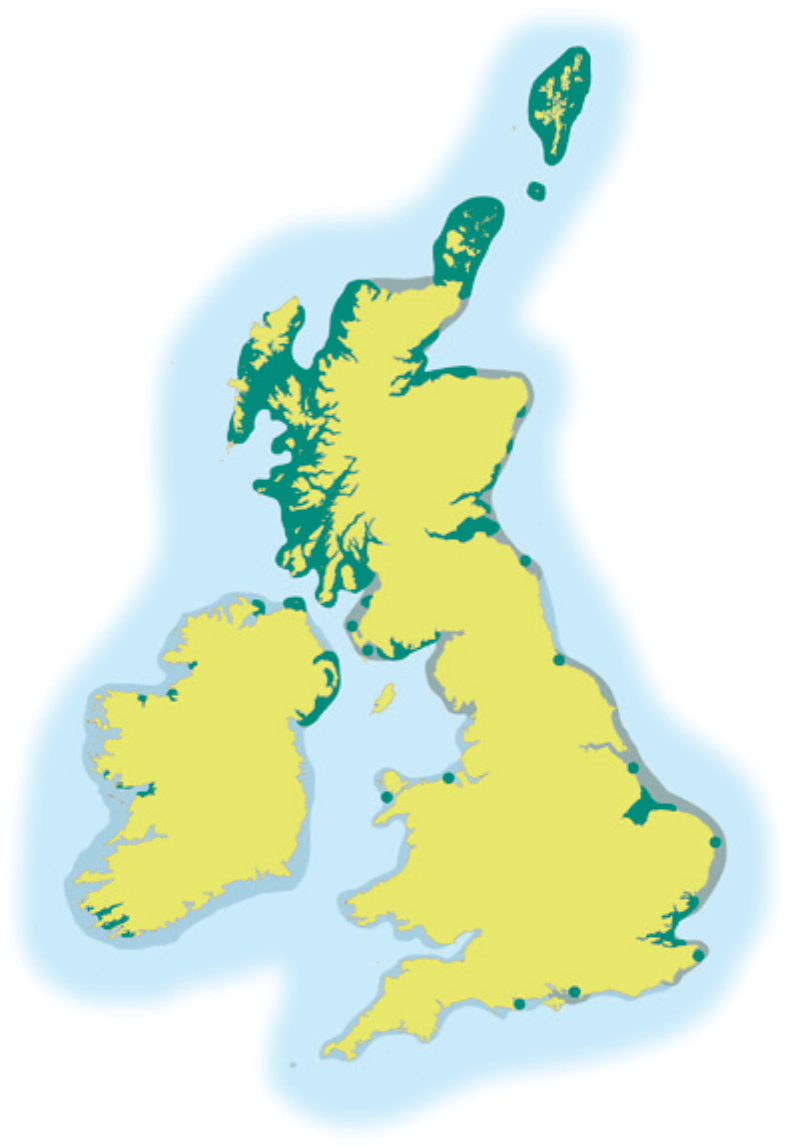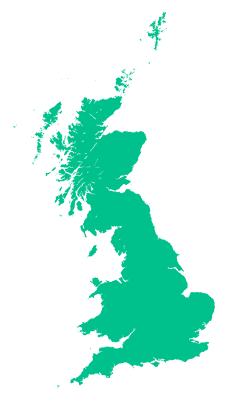
Common seals (also known around the world as harbour/harbor seals) are comparatively smaller than grey seals. Their pups do have a whitecoat, but it is moulted in the womb, so therefore they are born fully moulted with fur that can be black, grey, brown or white in colour.
Their fur is more generically spotted, rather than patterned as in grey seals, and the difference between males and females is not obvious from markings and colouration, although adult males are slightly larger. The muzzle of a common seal is short and there is no significant difference of this feature between mature males and females, giving them a more ‘cat-like’ appearance, while their nostrils form a ‘V’ shape when closed.
The species is distributed across the Northern hemisphere and found in the Atlantic and Pacific Oceans, Sea of Japan, North Sea and parts of the Baltic Sea. The UK is home to approximately 43,000 common seals (around 5% of the global population), but more significantly makes up around 50% of the European population (SCOS report, Sea Mammal Research Unit, 2016). The preferred habitat of this species is intertidal sandbanks, mudflats, estuaries and sandy beaches rather than rocky shores, so is therefore more frequently found along the East English coast (Kent, Essex, Suffolk, Norfolk, Lincolnshire) and Scotland (Firth of Forth to the Moray Firth, Orkney, Shetland, Inner and Outer Hebrides). These two primary locations are the only places in the UK where common seals may regularly be seen hauled out together with grey seals. Meanwhile, smaller numbers can be found in Northern Ireland, with more isolated colonies present in North Wales (Anglesey) and Southern England (Dorset, Hampshire). It is worth noting that in recent years the population around Eastern Scotland, Orkney and Shetland has declined significantly, and there is an apparent increase in mortality in the Southern North Sea countries, but the cause(s) are not yet fully understood.

Common seal pups are generally rescued in the vicinity of colonies, although later in the pupping/weaning season they can range quite widely and have been found as far from a traditional colony as Cornwall and the Channel Islands.
Adult animals can be found almost anywhere (although the estuary/muddy locations are more common.

Watch it from a distance. Do not approach the animal. Seals regularly haul out on our coasts – it is part of their normal behaviour and in fact they spend more time out of the water, digesting their food and resting. Therefore, finding a seal on the beach does not mean there is necessarily a problem and they should not be chased back into the sea as this may stop them from doing what they need to do – rest. A healthy seal should be left well alone.
After stormy weather and / or high tides, seals will haul out onto beaches to rest and regain their strength. Many do not need first aid, but we will always try to find someone to check them out just in case.
However, if there is a problem, there are a number of things you may see:
If you see a seal that may be abandoned, thin or ill, then call for advice and assistance:
BDMLR RESCUE HOTLINE:
01825 765546 (24hr)
or
RSPCA hotline (England & Wales): 0300 1234 999
SSPCA hotline (Scotland): 03000 999 999
You will receive further advice over the phone. If there is a problem with the animal, there are some important things you can do to help:
If you find a dead seal
The Cetacean Strandings Investigation Programme (CSIP) collects a wide range of data on each stranding found on English and Welsh shores, whilst the Scottish Marine Animal Strandings Scheme (SMASS) does the same for Scotland. If you discover a dead animal, please contact the relevant hotline and give a description of the following where possible:
Digital images are extremely helpful to identify to species, as well as ascertaining whether the body may be suitable for post-mortem examination.
CSIP has produced a useful leaflet that can be downloaded by clicking here.
CSIP hotline (England and Wales): 0800 6520333.
SMASS hotline (Scotland): 07979245893.